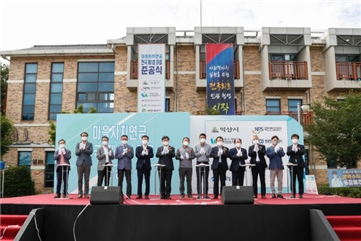Community Pension
According to the Korea Rural Economic Research Institute, the household income of urban workers in 2020 was 72.36 million KRW (around 51,330 USD), but that of rural workers was 45.02 million KRW (around 31,936 USD), 62.2% of the household income of urban workers. Since 1995, when the household income of rural workers was 96% that of urban workers – i.e. they were almost the same – the gap has continued to widen. Not only Korea, but also many countries around the world, including the United States, China, and Japan, are suffering from this gap between urban and rural earnings.
In addition, in rural areas, various derived effects are emerging due to population decline and ageing. According to the Korea Institute for Local Administration, rural areas have decreasing populations, slow economic growth, and are severely alienated in various dimensions such as culture, education, and information. The social safety network is insufficient to meet the needs of the ageing population, due to a low rate of subscription to the retirement guarantee system in rural areas, and limited public expenditure on welfare for older persons. In order to reduce the urban-rural gap, the government is carrying out various projects such as care services, expansion of facilities, and wage preservation for rural population. This report introduces the Community Pension, which is part of these efforts.

The Community Pension utilizes some of the business profits generated from facilities in a village to provide financial support to older persons who are unable to engage in economic activities. The Jeollabuk-do Institute says social interest in the business model of the Community Pension is increasing: local residents participate in planning to the contents of community projects, and use the results of their efforts for the common interests of the community.
Currently, the Community Pension is operated in Seongdangpo Village in Iksan, Jeollabuk-do, where it was introduced in July 2021, Dogye Village in Wanju-gun, Jeollabuk-do, and Geumseong Village in Hamyeol-eup, Iksan, Jeollabuk-do. Iksan's village pays 100,000 KRW (around 70 USD) a month to 28 persons aged 70 or older through profits generated from village projects such as renewable energy from solar power, accommodation facilities and camping sites. Dogye Village, Wanju-gun, the second site to operate a Community Pension, pays pensions to 32 persons aged 75 or older.
Seongdangpo Village is a small village with about 100 residents; one in three is aged 70 or older. The Community Pension pays part of the profits generated from economic activities in the village to local older persons, with the consent of the young people. The project is expected to have various effects such as increasing neighbourly consideration among residents, community recovery, and poverty prevention. It is attracting attention as one of the ways to subsidize retirement income security.

Questions have been asked about the economic sustainability of this pension system, but overall, the Community Pension is expected to be of great economic help to older persons in rural areas in the future. Social allowances are justified in terms of equity and universality because they provide economic support to all members of society regardless of the individual's economic level. Interviews with residents who are currently receiving this pension show that the Community Pension is a great help to them in their daily lives.
In terms of the human rights of older persons, the Community Pension, by supporting people financially, also supports independent living and helps maintain an appropriate standard of living. An important aspect of this pension is the social value of the consideration for older people and the commitment to community recovery it requires from the younger generation, who do not receive pensions. For the pension to be generated and paid, consideration and understanding from the younger generation are essential. In other words, it implies a reciprocal relationship based on consensus and coexistence between generations. Local governments in Korea are trying to expand the Community Pension nationwide. This is part of local government's efforts to restore the village community, an aim that goes beyond simply guaranteeing the income of older persons.